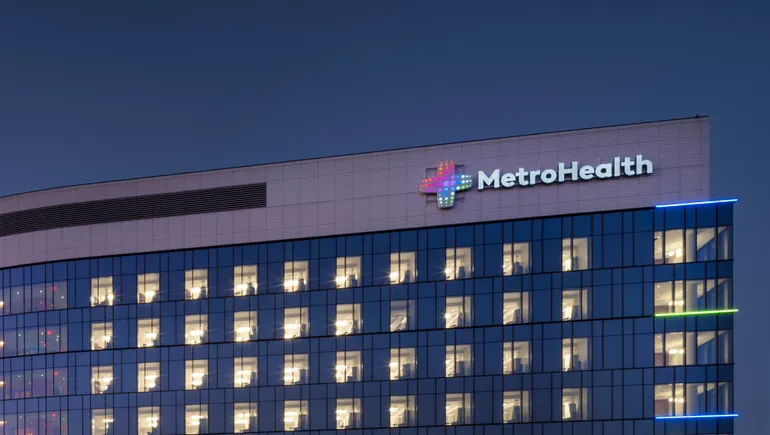Actual cost increases for employer-sponsored health insurance at the largest U.S. employers exceeded expectations in 2024, depicting a dire picture for the future of the industry, leaders at the Business Group on Health said in a press conference Tuesday.
BGH announced the results of its latest annual healthcare benefits survey during the event. The topline finding is that large employers within the group’s membership experienced median cost increases of 7.5% in 2024, up from 6.8% in 2023 and north of the projected 6.5% increase that employers projected for the year after adjusting their plan designs.
Last year marked the second consecutive year in which spending increases exceeded projections, Ellen Kelsay, president and CEO of BGH, said during the event. And the trend is expected to continue into 2026, with employers forecasting a median increase of 7.6% after plan design changes — the highest single-year projection in more than a decade, per Kelsay.
“The story this year is perhaps more daunting and sobering than it has ever been,” Kelsay said. “This troubling dynamic […] highlights the need for bold and decisive actions from employers, as well as many other industry stakeholders.”
Cancer again the most costly condition for health plans
BGH’s 121 respondents most commonly cited cancer as a condition that is responsible for increased costs, with 88% of employers ranking cancer as among their top three cost-drivers. This is the fourth-consecutive year in which cancer was the most commonly cited such condition by BGH’s membership.
The organization previously identified cancer as an area of concern for employers following the early years of the COVID-19 pandemic due in part to pandemic’s disruption of preventative screenings. Such screenings will form a key component of employer response moving forward, BGH found, with a higher percentage of employers saying they will take steps in 2026 to utilize a number of forms of cancer prevention measured in the survey.
The survey didn’t drill down into which specific cancers are contributing most to employers’ spend, but the organization’s findings on which screenings employers plan to expand do provide some context on this question, said Brenna Shebel, vice president at BGH.
Colonoscopy alternatives, breast cancer screenings lead list of cancer prevention measures large employers seek to cover
% of employers that plan to cover or provide each option in their health plans for 2026
For instance, nearly half of respondents said they would cover alternatives to colonoscopies for colon cancer screenings next year, while 43% will do the same for breast cancer screenings, up from just 25% in 2025. A quarter of employers said they planned to reward employees who completed recommended screenings through incentive programs.
Kelsay said her conversations with employers anecdotally and through other forums have shown that no particular type of cancer is the sole driver of the trend. “This is a wide array of cancers across a broader swath of the population at younger ages that typically are below guideline ages for when commencement of screenings would normally occur,” she added. “There are also later stage diagnoses.”
Other health issues that large shares of respondents said contributed to costs included musculoskeletal conditions, cardiovascular conditions and diabetes. Kelsay said autoimmune conditions are poised to be a potential future cost-driver.
Pharmacy fears require ‘bold and sustained’ action
Respondents said that pharmacy benefit spending made up a median share of 24% of their total health spending in 2024, which BGH described as a “significant increase” from 21% in 2021.
Within this category, weight-loss drugs such as GLP-1 drugs contributed to cost increases to a “very great extent” for more than 1 in 3 employers, signifying the category’s growth in recent years. Elsewhere, 66% said they were “very concerned” about the appropriate use and long-term cost implications of these drugs. BGH’s 2024 survey had already targeted GLP-1s as being potentially problematic for employers.
A majority of respondents likewise said that high-cost therapies were significant contributors to pharmacy costs, while others pointed to issues such as poor provider quality and fraud and abuse.
“The swirl of pharmacy concerns speaks to a need for a remedy and one that is bold and sustained,” Kelsay said. “The good news is that options have emerged in recent years that could play a vital role in addressing some of these challenges.”
Among the potential plan design changes highlighted in the survey, pharmacy benefit manager arrangements were of particular interest to most respondents. BGH found that while only 16% of employers had already implemented transparent or other new forms of PBM arrangements, 11% were planning to do so in 2026, and 43% were considering doing so by 2027 or 2028.
Vendors on notice, while employees may take financial hit
Similarly, the survey identified a number of measures employers have considered in order to lower overall costs.
One primary method is negotiating with vendors, as 97% of respondents said they were at least “mildly” considering leveraging their request-for-proposal processes to secure better pricing from either incumbent vendors or new ones. A majority, 85%, also is either strongly considering or immediately implementing plans to replace underperforming vendors.
“As these responses indicate, vendors are vulnerable,” Kelsay said. “Those that consistently demonstrate the value of their services, improve outcomes, effectively manage cost, leverage and share data and are agile in terms of addressing needs will be well-positioned.”
Employers generally have tried to absorb as much of recent cost increases as possible within their plans, Kelsay added, but this too may be subject to change. Employees could be asked to share more of those increases, and 2026 may be the year in which they see a slight uptick in their premium contributions.
BGH’s survey found that only 12% of respondents were already increasing overall employee contributions, and only 9% were doing the same with respect to increasing employees’ out-of-pocket costs. However, a majority were at least somewhat considering taking either action to dampen the effect of anticipated cost increases. Kelsay cautioned that doing so may not be preferable to other actions.
“Passing cost increases is a Band-Aid approach,” Kelsay said. “It does not fix the long-term cost dynamic that we’ve discussed throughout the briefing, and employers are going to have to pull as many levers as they can on the vendor side to address the overall plan costs, and then certainly within that is the affordability for the employees as well.”






Leave a Reply